Pressure switches - General information and Operating principle
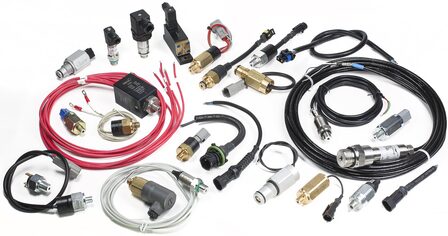
GENERALITY
The management of technological processes in any field of activity, such as in the manufactoring or automotive industry, requires control of the pressure of the fluids that operate the system. This requires associating a particular pressure value, witch is important for the system, to an electrical signal, for instance to run a machine cycle or indicate a particular applications (leaks, lalarms, ects). These operations can be controlled using a kind of pressure sensors, setted to suit the particular applications. Called PRESSURE SWITCHES.
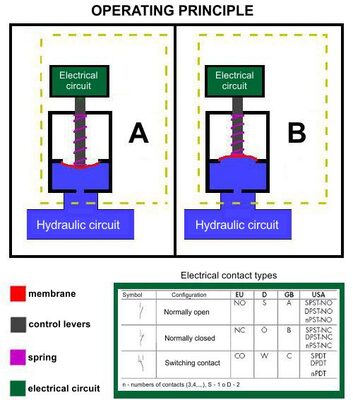
PRESSURE SWITCHES OPERATING PRINCIPLE
For to be able to wotk correct the pressure switches must be setted. A switch can be calibrated using a set screw witch, by acting on a calibration spring, determines its load. The spring opposes the thrust of the pressure exercise d by the fluid on the sensitive element (a membrane or piston), allowing the electrical contact to close or open only when the pressure setting is reached.
For to be able to wotk the pressure switche are From an electrical point of wiew, there three main types:
- with two-way normally-open (NO) electrical contacts (SPST)
- with two-way normally-closed (NC) electrical contacts (SPST)
- with three-way changeover electrical contacts (SPDT)
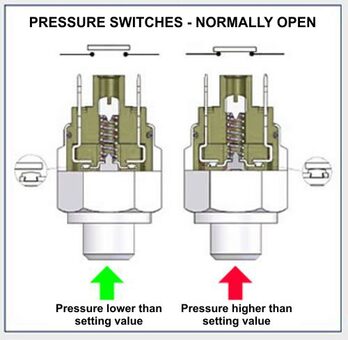
PRESSURE SWITCHES - NORMALLY OPEN (NA)
In the NORMALLY OPEN (see picture on the right NO), the contact is open, i.e. is no flow current in the absence of pressure.
When the pressure setting is reached, the electrical contact close..
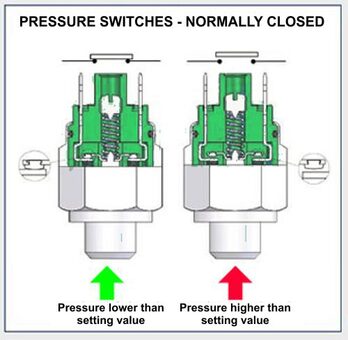
PRESSURE SWITCHES - NORMALLY CLOSED (NC)
In the NORMALLY CLOSED (see picture in the right NC), the contact is closed in presence of pressure. We can see that the contacts are closed and the signal is present on the external contacts. When the pressure setting is reached, the electrcical contact rises and interrupts the signal.
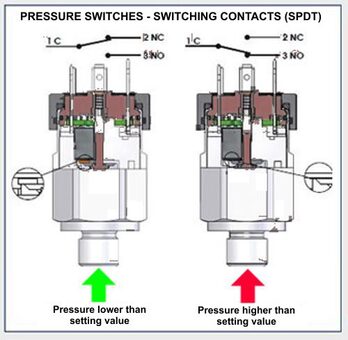
PRESSURE SWITCHES - SWITCHING CONTACTS (SPDT)
In the SWITCHING CONTACTS (see picture on the right side) version, the pressure on the fluid on the separated element (diaphragm or piston) causes a microswitch to switch. Either NC or NO contacts, or both, can be used in this version we can select the right choise of contacts (NO or NC) for the application (but no both).
APPLICATIONS
The adjustable pressure switches are used in control systems, where at project level it is useful or necessary to obtain a change of state for a specific pressure value. For example, in domestic heating systems, the opening of a tap in the domestic water circuit produces a lowering of the pressure and the consequent activation of the boiler. Or, in air conditioning systems for motor vehicles, a high pressure switch actuates the condenser fan when a certain operating pressure value in the system is exceeded (and deactivates the compressor if a critical value is exceeded), and a low pressure switch pressure deactivates the compressor in case of inadequate suction pressure (determined, for example, by an insufficient amount of refrigerant fluid, a too low ambient temperature or an operating defect of the interior ventilation system). Other common applications of pressure switches are in the safety systems of hydraulic and pneumatic brake systems of convoy vehicles, trains, road trains, or air compressors.